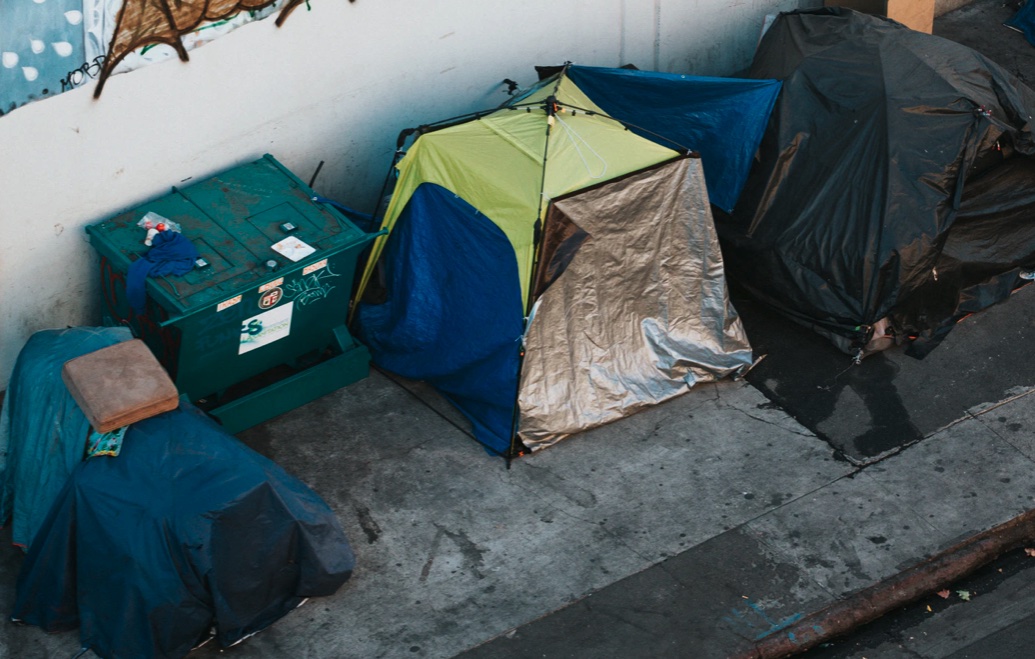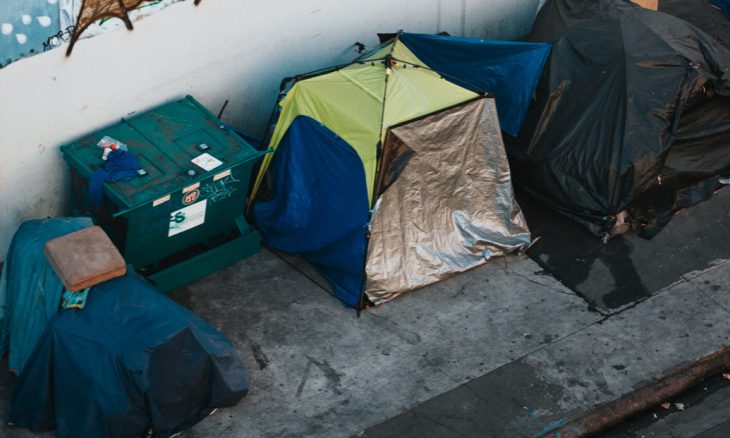More Than a Blight on Cities

City officials across the nation are being faced with tent cities and homeless encampments. They frequently appear in areas where commerce is greatly affected and where other residents become fearful to tread. Law enforcement is often the first (and sometimes the only) point of contact between the government and persons experiencing homelessness. Some issues they can address, but others are beyond their purview.
According to a study on behalf of the National Institute of Justice, homelessness ad overall health and wellness are deeply intertwined. Police have few options beyond taking people to jail or a hospital. Other services for the homeless within communities are inadequate and those resources are frequently unavailable.
A research report published in July assessed the issues of homelessness across the country and found they occur everywhere. The greatest variable they found was the availability of affordable housing. The pair of researchers published a book, Homelessness is a Housing Problem, that looks at the contributing issues to homelessness, including mental illness and addiction, and looked at the per-capita rate of homelessness around the nation.
By looking at the rate of homeless per 1,000 people, they found communities with the highest housing costs had some of the highest rates of homelessness, something that might be overlooked when looking at just the overall raw number of homeless people.
A report that came out at the end of July found that a growing number of baby boomers today are facing the problem of homelessness. If current trends continue, the number of aging homeless in three major metropolitan areas will double by 2030, the report said.
A study published in Doorways says one in 30 American children experience homelessness annually, 51 percent are under age five. More than 2.5 million children are homeless each year in America, and family homelessness is a growing social problem. A typical homeless family is comprised of a single mother with two young children.
Beyond the lack of available affordable housing, mental illness, addictions, and other issues are contributing factors to homelessness. An assistant professor of real estate at the University of Washington’s College of Built Environments said, “You could fix the addiction [problem]… right now and you’d still have a problem with homelessness because there just aren’t places for people to go who have lower levels of income.”
And just as crime is a growing problem in major metropolitan areas, crime can be a problem within homeless encampments. There are frequent fires and, in many areas, rats infest the camps because hygiene opportunities are absent or unused, and they are attracted by the combination of filth and tidbits of food. It is these issues within the homeless that are the most visible, as homeless families are often in the shadows.
The Ending Homelessness Act was introduced in 2021 by Representative Maxine Waters of California. The legislation provided for grants for emergency housing relief, and a fund to provide for low-income and very-low-income families. It was referred to the Committee on Financial Services and to the Committee on the Judiciary but did not go beyond the referral.
The House-passed Build Back Better legislation contains more than $170 billion in housing investments to begin to address this unmet need. The legislation includes funds for about 300,000 new housing vouchers and other funds to address the nation’s public housing. That legislation stalled, and apparently died, in the Senate.
Homelessness exists across the globe, yet Finland is the only EU country where the rates are falling. Their solution? Giving people homes as soon as they need them…unconditionally. In Helsinki, the city, through a group called the Y Foundation, becomes the landlord and the homeless are tenants. They sign contracts, pay rent, and apply for housing benefits. Julia Kaakinen, the program director, said, “We had to get rid of the night shelters and short-term hostels we still had back then. They had a very long history in Finland, and everyone could see they were not getting people out of homelessness. We decided to reverse the assumptions.”
With state, municipal, and NGO backing, flats were bought, new blocks built and old shelters converted into permanent, comfortable homes.
In the Old Testament, the Gospels, and the Epistles, believers are told to care for the poor and needy. Deuteronomy 15:11 says, “For there will never cease to be poor in the land. Therefore I command you, ‘You shall open wide your hand to your brother, to the needy and to the poor, in your land.’”
How then should we pray?
- For God’s protection over those who are experiencing homelessness.
- For families with children to be guided to places of peace and security.
- For governing officials to address the levels of affordable housing.
- For those among the homeless population who are alcoholics, drug addicts, and mentally ill to utilize existing resources available to secure sobriety and wellness.





